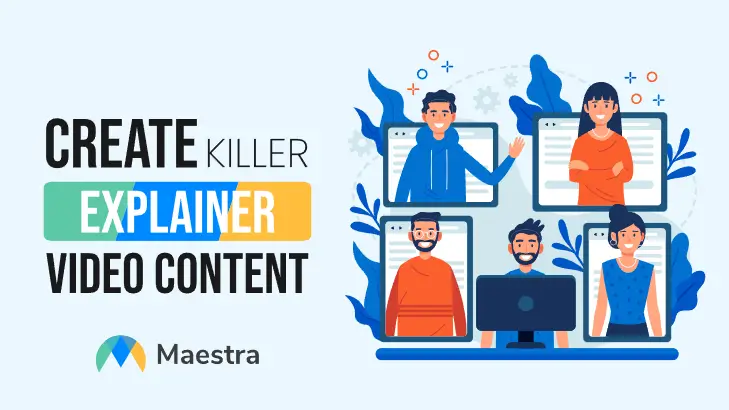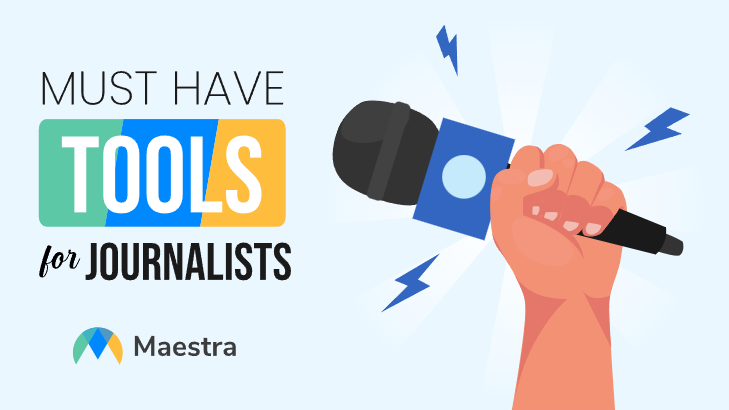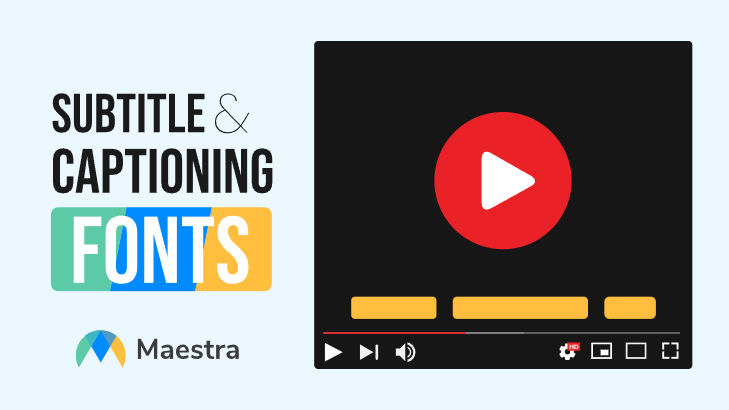What Are SDH Subtitles? Everything You Need to Know

Video content consumption has increased recently with the rising popularity of smartphones and social media. Globally people are spending more time watching videos, and the number is growing each year. Creating great videos needs a clear picture quality and crisp sound effects. But as there is much competition in the industry, it is necessary to make your videos reach the right audience. It can be done by creating content and making it available for a wider audience.
To ensure your video reaches your targeted audience and beyond, you must add SDH subtitles to your video. It makes your video available for a global audience as people can easily follow conversations even if they don’t understand the language used in the video. To address the issue for those with hearing impairment, you must add SDH subtitles to your video. These allow the viewers to understand the content of your video by reading it.
What are Subtitles?
The transcription of a video’s verbal content into text format is known as a Subtitle. It is in a language other than the one used in the video and appears at the screen’s bottom. Subtitles help viewers who do not understand or are not fluent in the video’s language to follow the conversation. Subtitles, along with the music and sound effects, improve the viewer’s overall experience.
What are SDH Subtitles?
SDH Subtitles are for the Deaf or Hard-of-Hearing (SDH). These display details of the video’s aural content, including sound effects, music, background sounds, and speaker names. SDH Subtitles are added to video content to offer a holistic viewing experience to those with hearing disabilities. SDH subtitles are detail-oriented, and all acoustic elements of the video are presented as text. The text appears in-sync with whatever is happening on the screen or in the background. It includes speaker identification, background noise, and other non-speech elements. Jooble for SDH jobs.
Difference between Normal Subtitles & SDH Subtitles
Subtitles and SDH serve the same purpose of making video content quickly and conveniently perceivable by the viewers. Though they have a few similarities too, one cannot replace the other. The significant differences between Normal Subtitles & SDH Subtitles are:
| S. No. | Normal Subtitles | SDH Subtitles |
|---|---|---|
| 1. | Subtitles are in a language other than that used in the video. | SDH Subtitles are in the language used by the speakers in the video or other languages. |
| 2. | Subtitles don’t provide speaker details. | SDH display all information about the speakers, including names, gestures, and responses to background noises. |
| 3. | The transcribed text of subtitles doesn’t display sound effects, as they are created assuming the audience can listen to the sounds. | All verbal and non-verbal sound effects, including background sounds, are displayed in SDH, as they are created considering the audience is deaf or hard-of-hearing. |
| 4. | Viewers may view the text in different fonts and colors. | Viewers may select the text settings, including language and format, as per their preference. |
| 5. | Subtitles appear at the lower bottom in the center of the screen but may be placed anywhere as per viewer preference. | SDH is locked at the center of the screen in the lower bottom third position to maintain consistent viewing ease. |
SDH Subtitles vs Captions
SDH subtitles enhance the user’s experience by adding additional elements, such as speaker tags, sound effects and other elements outside of speech. It has combined features of both captions and subtitles. It informs the users of the speech elements as well as other non audio elements. These are especially for the viewers who have hearing problems and focuses on making the content easily accessible to them. It can also be translated into multiple foreign languages for people who understand only specific languages. SDH subtitle text is usually displayed in the center of screen and locked in the lower bottom third of the screen.
Closed captions generally appear as white text on black background. It can usually be aligned and displayed on different parts of the screen. Closed captions and subtitles are encoded in a different manner. While closed captions are encoded as a stream of commands, control codes, and text, subtitles are often encoded as bitmap images – a series of tiny dots or pixels.Closed captions are not accessible for HD disc media and are not supported by HDMI unlike SDH subtitles
How does SDH Subtitles work?
As per WHO records dated March 2020, around 5% of the world’s population has disabling hearing loss. Adding SDH subtitles to your videos allows you to connect with them. SDH Subtitles help them understand the auditive content by reading it and offers a holistic visual experience. You can add these to your video to transcribe all dialogues and sound effects into text displayed on-screen. SDH subtitles are comprehensive, and they are useful for the audience other than the hearing impaired, such as non-native speakers and those watching videos without sound.
SDH Guide for Beginners
SDH is helpful in making your content reach a wider audience across the globe and makes it easy to access. There are different types of subtitles and captions. Knowing the ideal type of subtitles and captions for your video is important.
There are several manual and automated ways to add SDH to your content depending on your specific needs and goals for the video. You can use various softwares like maestra which help you to easily do so. It helps the audience to interpret and understand the content despite all background noises, speaker differentiation, and other important information. Also, it is also useful to viewers who do not speak the language used in the video.
SDH is a comprehensive type of subtitle which includes all type of verbal and non-verbal sounds and focuses on enhancing viewing experience. Since it combines both audio and language information in only one subtitle file, it can be easily viewed by audiences who know different languages.
Why add SDH Subtitles to your Videos
- Increased accessibility
SDH subtitles make your videos easily accessible through improved SEO. Also, it helps you reach out to the audience who are hard-of-hearing but are interested in your content. An increased number of views of your videos improves your online reputation on platforms like YouTube. - Easy comprehension
SDH subtitles make your videos easily understandable by deaf and hard-of-hearing viewers. These also make your video comprehensible for individuals who do not understand the language used in the video or speak it as a second language. Research shows that “captioning a video improves comprehension of, attention to, and memory for the video.” - Technologically advanced
With the increasing popularity of digital televisions and smart devices to access video content, closed captions became challenging to support and decode. SDH subtitles are widely accepted as transcription text for your video content and are supported by HDMI. They are encoded as bitmap images, making them apt for use with high-definition visual media and disc media. - Follow regulations
Regulations related to captioning video content may vary in different countries. But most of them require content creators to add subtitles or captions that make the content easily understandable by the disabled. The authorities expect subtitles to be accurate, well-timed and appropriately placed. Not complying with the guidelines of the respective country may lead to legal action against the content creator. - Improved viewing experience
Adding SDH subtitles improves the viewer’s overall experience. The transcription of all audible sounds ensures your audience doesn’t miss out on details and descriptions. Besides the deaf and hard of hearing, they also help the elderly, children, and others who find it challenging to follow thick accents.
How to add SDH Subtitles to your Videos
As mentioned above, SDH subtitles are encoded as pixels or bitmap images. Before adding them to your videos, you must decide the right type of SDH as per your need. There are over 20 subtitle formats to choose from depending upon the platform where your video will be available.
You can start by transcribing the dialogues and then adding particulars such as speakers’ names, the description of background noises, and music. The points to be considered are:
- The text should be synced with the actual audio.
- Subtitles should be well-timed to allow the viewers to read them while watching the visuals.
- They should be simple with proper line endings to aid reading.
- Their placement should not obstruct on-screen graphics or the speaker’s face.
- Accents and tone of speech must be appropriate.
- The transcript should be legible by non-native speakers.
- Names, places, and registered trademarks should be accurate.
- The subtitles should change with the shot without gaps. It is necessary to avoid the “flashing” effect that is otherwise tiring for the viewers.
How Maestra helps?
Maestra software helps to save time by adding subtitles to videos easily. This can instantly generate subtitles and closed captions for videos in a few minutes. It can translate your captions automatically to 80+ languages. You can try it for free, no credit card required.
Takeaway
SDH subtitles give your videos a competitive edge by improving SEO rankings and providing ease of viewing. You can add them to your videos manually or hire a subtitle writer. Automatic subtitle generators available online can also help you. But you must thoroughly review the transcript before uploading it as there may be mismatches based on accents, context, low sound quality, and other audio cues. But the results you get by adding SDH to your videos like increased views and global reach of your content, are worth the effort.



